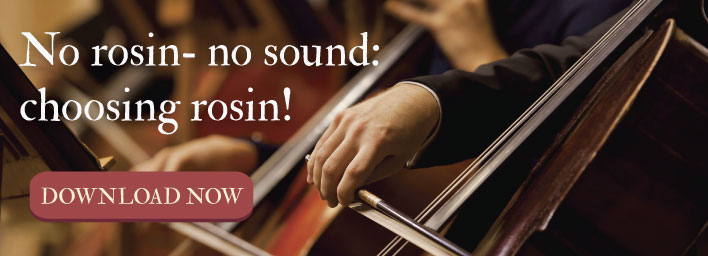How Often Should You Replace Your Violin Strings?

Aviolin’s sound depends on several factors, including the quality of the instrument, accurate tuning, proper playing technique, and the type of the strings you’re using (and their freshness).
When it comes to violin strings, students should focus on selecting strings that are right for their playing level, and then take care to change them as directed. Replacing strings periodically is the best and cheapest way to improve your sound.
Every player and set of strings is different, so there is no exact “rule of thumb” for how often strings should be replaced. Rather, there are several symptoms or guidelines to use as indicators.
Signs a replacement is in order
Sometimes, players say, “I’ve been playing on these strings for more than a year, and they sound just fine.” This may seem to be the case, but odds are the slow deterioration of the strings’ quality and sound escapes your notice because it’s happening little by little. Once you replace them, your ears and your fingers immediately notice the difference. Not changing them in due time may lead you to alter your left hand or bow technique to compensate for a duller, less projecting sound.
Here are some of the signs your strings need replacements:
You’ve played on the same set for 300 hours or more
Violin strings have an “average use span,” sort of like car tires. The string experts at Connolly Music have found the optimal life of orchestral strings is around 300 playing hours – give or take 10%. That variance depends on the brand and type of strings you select, as well as some of the factors listed below.
Among other benefits, keeping an accurate practice/performance log tracks your playing time. You may be surprised how often your strings are due to be changed. A beginner may not need to replace violin strings for six months, while most intermediate and advanced students change their strings every three months or so.
You perspire a lot
The sweat and oil from your hands are the enemies of strings. Over time, the salt and acid level of your hand and finger perspiration degrades string quality. So, if you are more anxious by nature or you tend to have sweaty hands, you should replace your strings more often than recommended.
Similarly, violinists living in humid climates require more frequent string changes due to fluctuations in temperature and humidity between seasons.
You’ve advanced to the next level
There are a range of string sets available, based on playing level and preferred sound quality. Whenever you make the leap from beginner to intermediate, from intermediate to advanced or you’re performing in public more often – consider experimenting with new string types more suited to your elevated playing status. Thomastik-Infeld offers an array of strings for players of every level – all designed to elicit the best tones a violin can produce – and all at competitive price points.
Frequent tuning required
It’s normal to retune an instrument before sitting down to practice, and once or twice during extensive practice sessions or performances (about every 30-minutes or so). If your violin doesn’t hold its tuning and you have to tune more often than this, your strings may be compromised. Replace them and see if that helps. If not, there could be issues with tuning pegs, the bridge, or the fingerboard.
Strings look grimy or dingy
Compare the strings on your violin to the ones in your replacement pack. Just as sound quality can diminish slowly without your noticing, physical deterioration of strings makes them appear dirty or grimy. If it’s been more than three months, and you notice strings look grimy or dulled, replace them and you’re bound to notice a difference in sound quality as well as ease of tuning and playing.
Diminished sound quality
The more experienced your ear becomes, the more attuned you’ll be to diminished sound quality. Worn out strings sound duller and can’t achieve optimal resonance. Again, use a calendar or log of hours played to gauge this marker at first. When you’ve reached the three- to six-month window, and/or you’ve played for 300-ish hours, change your strings and see if it makes a difference. When you consider Alphayue strings retail for around $20 per set, it’s easy to have extra sets waiting in the wings.
Extending string life
Here's some maintenance tips, to help extend the life of your strings:
- Make sure you lubricate the nut and bridge grooves with pencil led before setting up your new strings. It will avoid damaging the windings.
- Don’t forget to wipe your strings after you play with a clean cloth:
- where the bow goes, between the bridge and the fingerboard, to avoid rosin accumulation.
- above the fingerboard, to limit impact of dust or sweat on the aging of your strings.
Changing strings regularly, when you notice signs of wear, compromised quality, or in line with how often you play, will keep your violin sounding and feeling its very best.
Sponsored by Thomastik-Infeld

